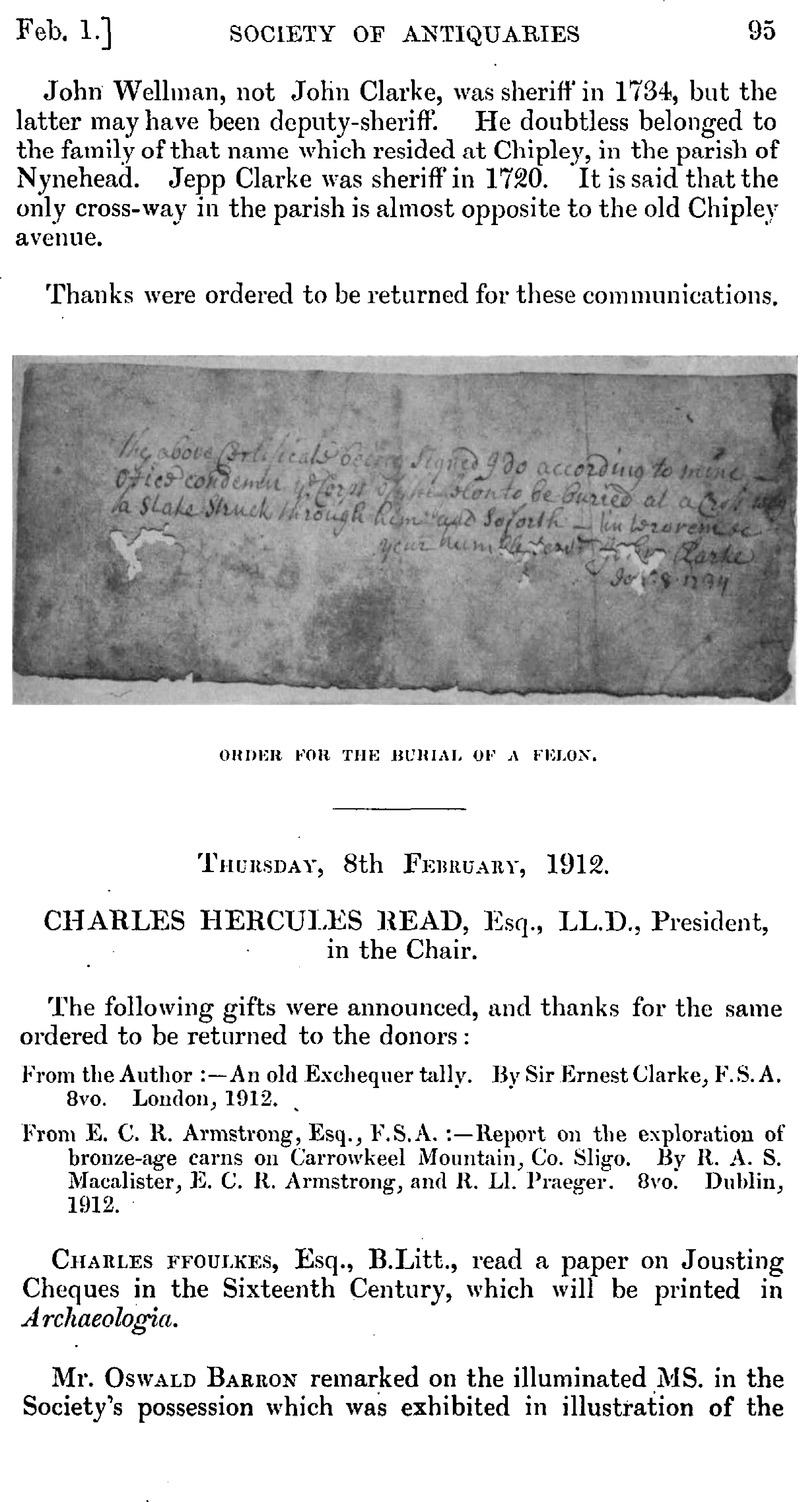No CrossRef data available.
Article contents
Thursday, 8th February, 1912
Published online by Cambridge University Press: 10 May 2010
Abstract

- Type
- Proceedings
- Information
- Copyright
- Copyright © The Society of Antiquaries of London 1912
References
page 98 note 1 ‘Near this Church is yet extant S. Constantine's Well, strong built of stone and arched over : on the inner part hereof are places or seats for people to sit and wash themselves in the stream thereof.’—Hals.
page 98 note 2 ‘No trace of the Well of St. Constantine could we find in July 1891—at least none of which one could feel certain.
‘At about a stone's throw from the ruined Chapel, on lower ground and surrounded by marsh, was a little mound, grown over by grass and rushes and weeds : on pushing back some of the growth there appeared to be two low walls—whether of masonry or mud we could not tell, and a very slight covering over it near the back : but if these were really the remains of a building erected over the spring, there seemed to be no place for the water to run from it.
‘There was a running stream : but although quite close, it appeared to have nothing to do with the little mound.’–From Ancient and Holy Wells of Cornwall, by M. & L. Quiller-Couch.
page 103 note 1 Lives of British Saints, vol. ii, P. 175.




